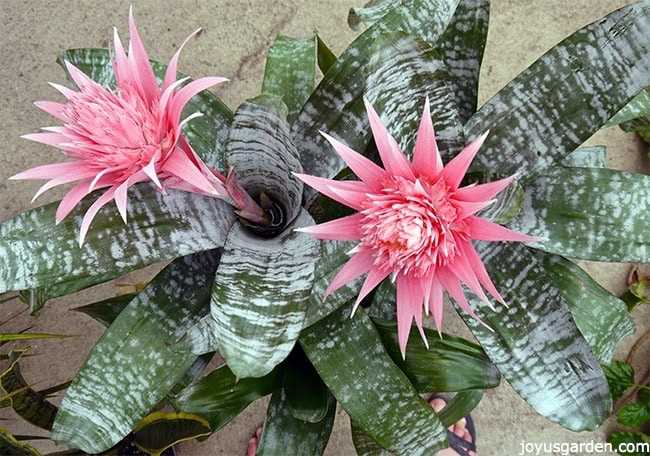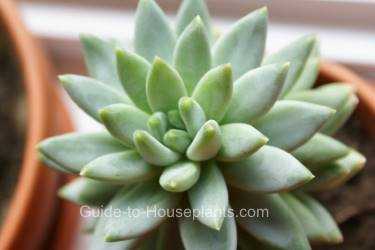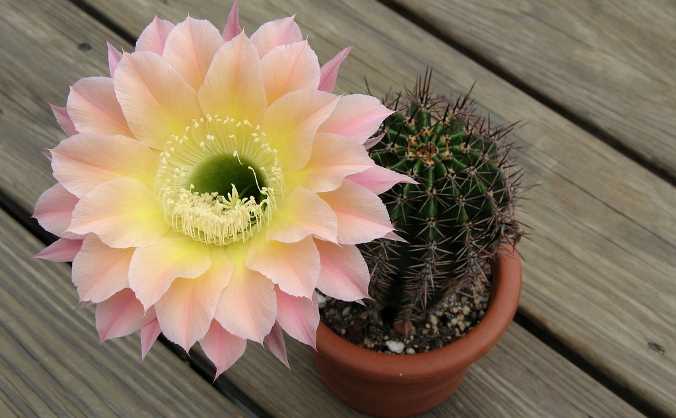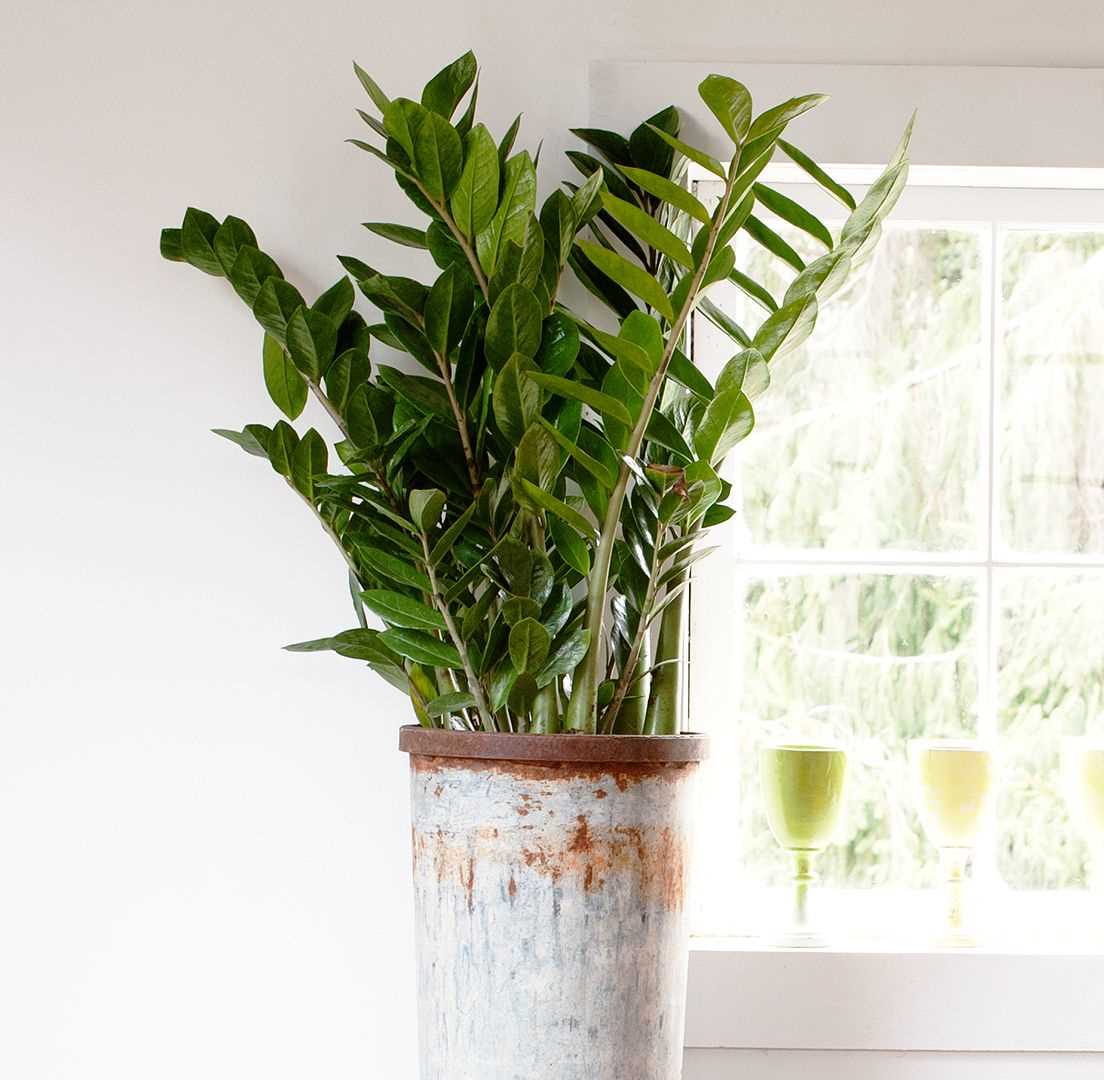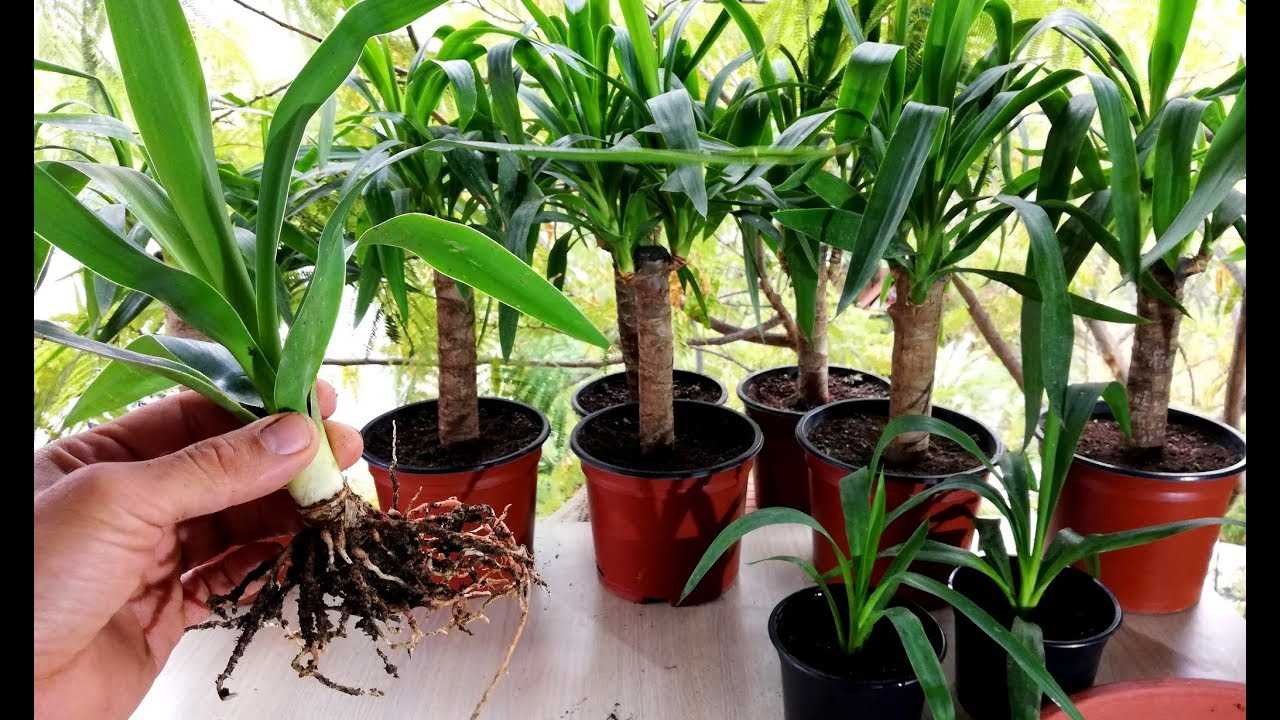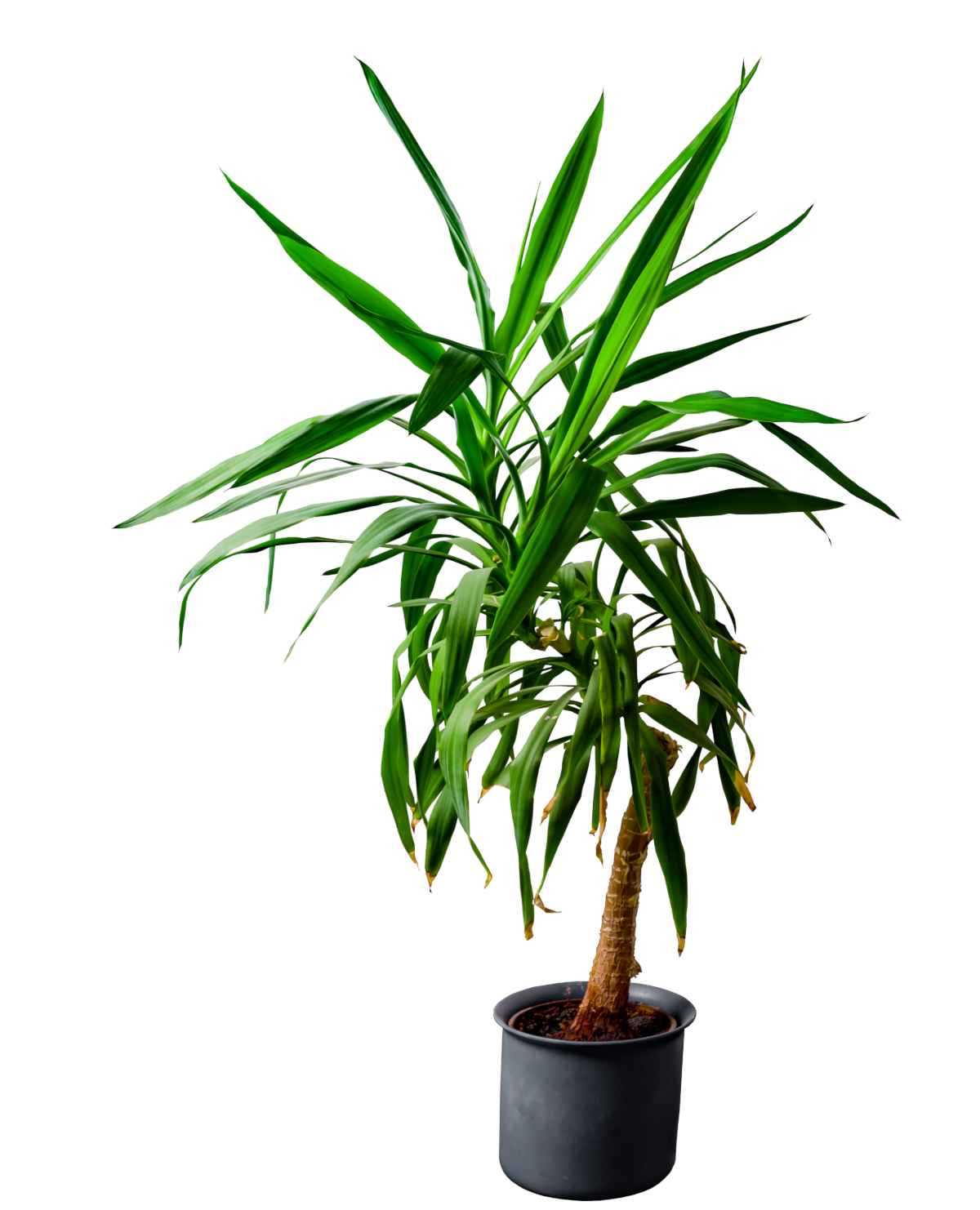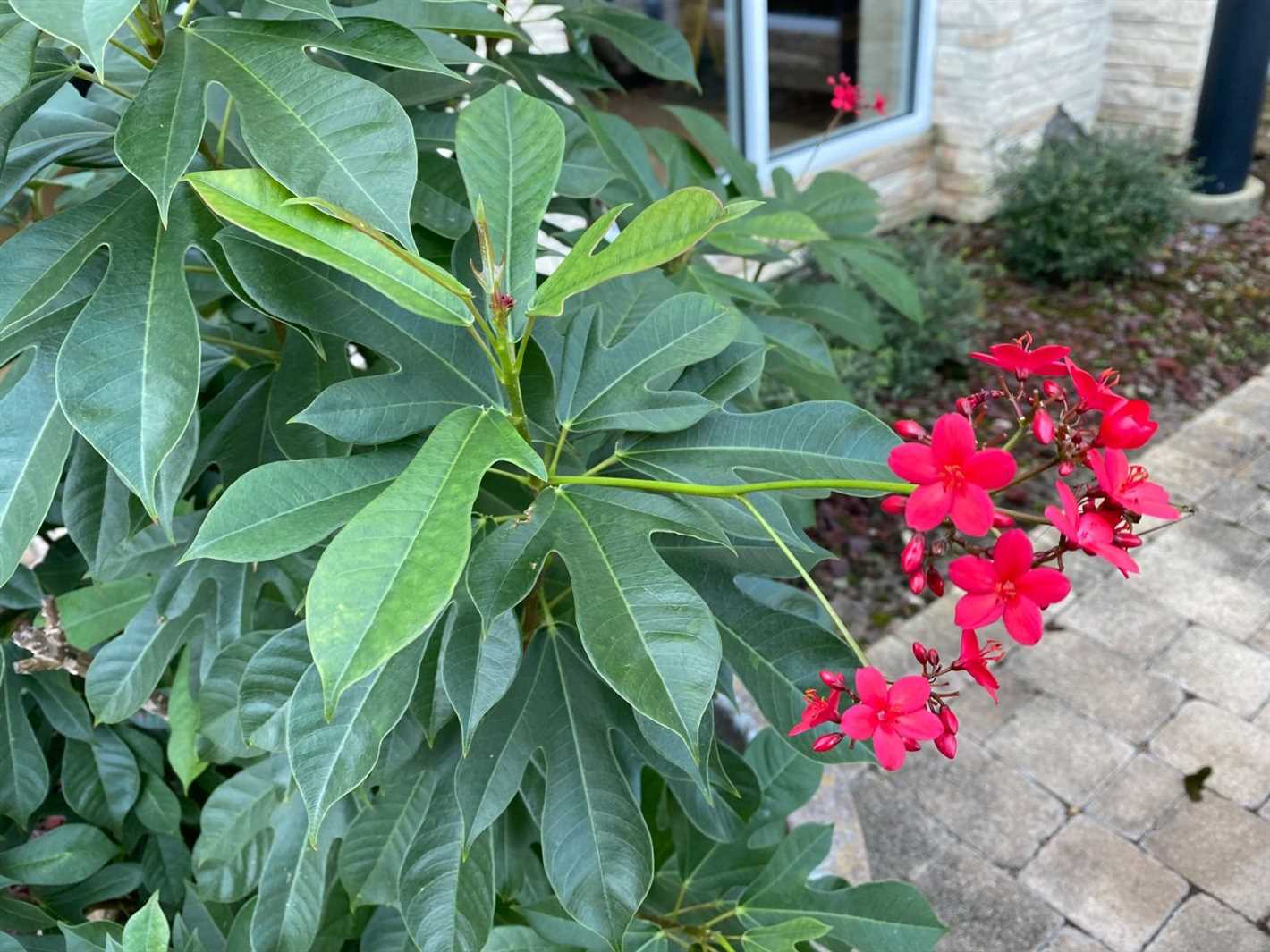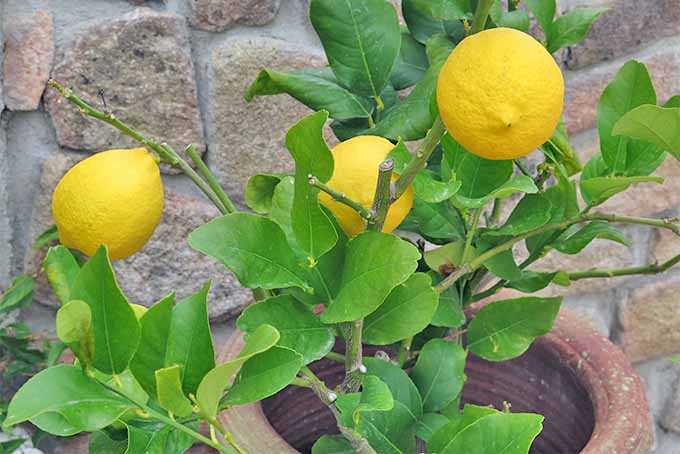- Monstera Care: Essential Tips for Healthy Plants
- 1. Proper Lighting
- 2. Adequate Watering
- 3. Humidity Levels
- 4. Proper Soil and Fertilization
- 5. Pruning and Support
- 6. Pest Control
- Monstera Photos: Stunning Images of This Iconic Plant
- Monstera Types: Explore the Different Varieties
- 1. Monstera Deliciosa
- 2. Monstera Adansonii
- 3. Monstera Obliqua
- 4. Monstera Borsigiana
- 5. Monstera Dubia
- How to Propagate Monstera: Step-by-Step Guide
- 1. Choose a Method
- 2. Prepare the Tools
- 3. Take Cuttings
- 4. Rooting Hormone (Optional)
- 5. Plant the Cuttings
- 6. Provide Proper Care
- 7. Wait and Monitor
- 8. Transplant or Share
- Monstera Problems: Common Issues and Troubleshooting
- 1. Yellowing Leaves
- 2. Brown Spots on Leaves
- 3. Leaf Curling
- 4. Yellowing or Browning Leaf Tips
- 5. Lack of Growth
- Monstera vs. Philodendron: How to Tell the Difference
- Leaf Shape and Size
- Growth Habit
- Fruit Production
- Genus and Species
- Care Requirements
- Monstera in Interior Design: Styling Ideas and Inspiration
- 1. Statement Plant
- 2. Hanging Plant
- 3. Plant Shelf
- 4. Monochrome Color Scheme
- 5. Natural Contrast
- 6. Indoor Jungle
- Monstera FAQ: Answers to Your Frequently Asked Questions
- 1. How often should I water my Monstera?
- 2. How much light does a Monstera need?
- 3. How often should I fertilize my Monstera?
- 4. Should I prune my Monstera?
- 5. How do I propagate a Monstera?
- 6. Are Monstera plants toxic to pets?
- 7. Why are the leaves of my Monstera turning brown?
- 8. Can I place my Monstera outdoors?
- 9. How fast does a Monstera grow?
- 10. Can I propagate Monstera from a leaf cutting?
- 11. How do I clean the leaves of my Monstera?
- 12. Why are there no holes in my Monstera leaves?
- 13. Can I grow Monstera in water instead of soil?
- 14. What are some common pests that can affect Monstera?
- Q&A:
- How do I take care of a Monstera plant?
- What are some common types of Monstera plants?
- Can I propagate a Monstera plant?
- Why are the leaves of my Monstera plant turning yellow?
- How do I clean the leaves of my Monstera plant?
- Video: Tips + Tricks For Monstera Deliciosa | ALL YOU NEED TO KNOW Indoor Plant Tips For Beginners
Monstera, scientifically known as Monstera deliciosa, is a popular houseplant known for its large, glossy leaves and unique leaf shape. This tropical plant is native to the rainforests of Central America and is often referred to as the “Swiss cheese plant” due to the unique holes and splits in its leaves.
Caring for a Monstera plant is relatively easy, making it a great choice for both experienced and novice plant enthusiasts. They thrive in medium to bright indirect light and prefer well-draining soil. Watering should be done when the top inch of soil is dry, and it’s important not to overwater as this can lead to root rot.
Monstera plants come in various types, each with its own unique characteristics. The most common type is the Monstera deliciosa, which has large, heart-shaped leaves. Another popular variety is the Monstera adansonii, also known as the “Swiss cheese vine,” which has smaller, more perforated leaves.
Whether you’re a seasoned plant lover or a beginner, Monstera plants are sure to add a touch of tropical beauty to your home or office. With their large, lush leaves and easy care requirements, they are the perfect addition to any indoor garden.
Monstera Care: Essential Tips for Healthy Plants
Monstera plants, also known as Swiss cheese plants, are popular for their large, lush leaves and unique foliage patterns. To keep your Monstera plants healthy and thriving, follow these essential care tips:
1. Proper Lighting
- Monstera plants prefer bright, indirect light. Place them near a window with filtered sunlight.
- Avoid direct sunlight, as it can scorch the leaves and cause them to turn yellow or brown.
2. Adequate Watering
- Water your Monstera plant when the top inch of soil feels dry to the touch.
- Avoid overwatering, as it can lead to root rot. Make sure the pot has drainage holes to allow excess water to escape.
- During the winter months, reduce watering frequency as the plant goes into a dormant period.
3. Humidity Levels
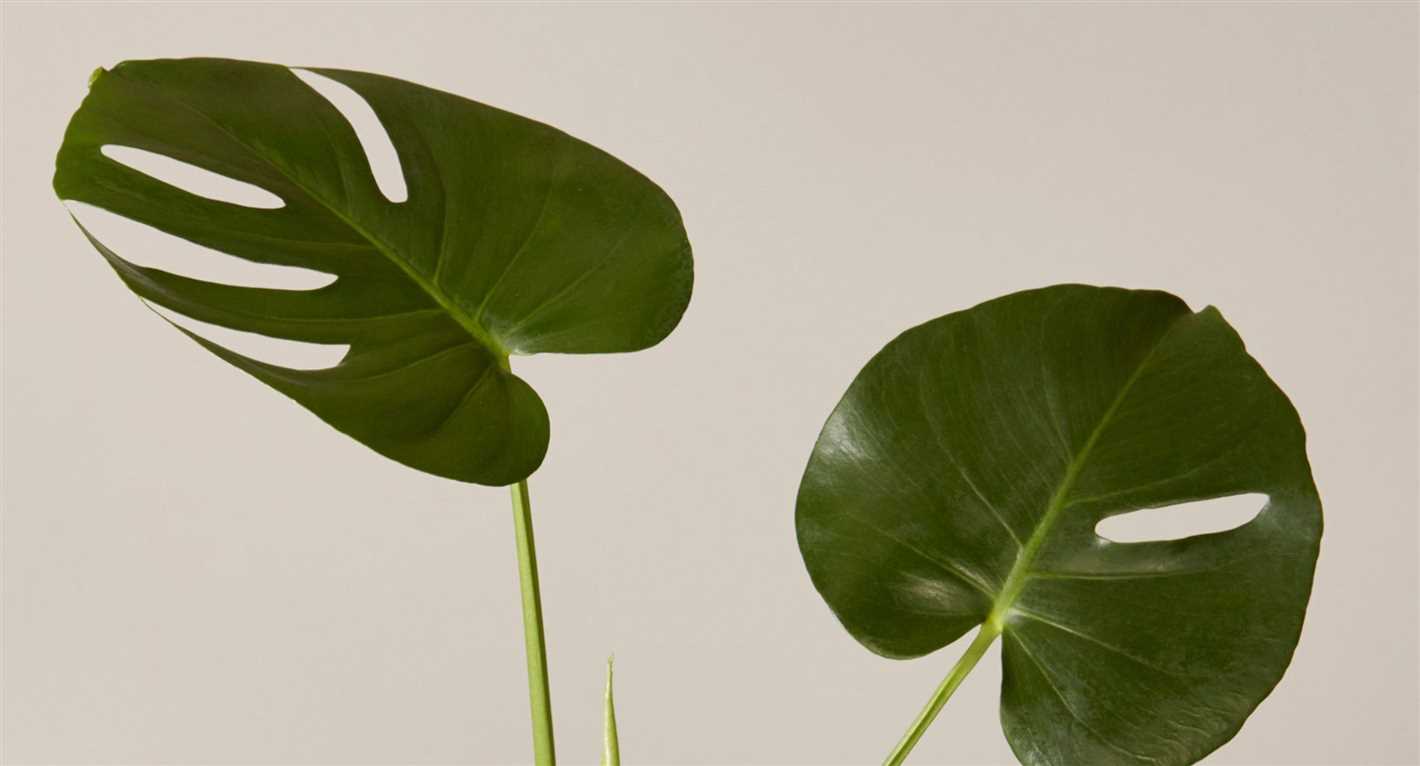
- Monstera plants appreciate higher humidity levels, similar to their tropical rainforest habitat.
- You can increase humidity by placing the plant on a tray filled with water and pebbles or using a humidifier.
- Misting the leaves occasionally can also help increase humidity.
4. Proper Soil and Fertilization
- Use well-draining, rich potting soil for your Monstera plant.
- Add organic matter, such as compost or peat moss, to improve soil fertility.
- Fertilize your plant monthly during the growing season with a balanced, water-soluble fertilizer.
- Avoid over-fertilizing, as it can lead to salt build-up in the soil.
5. Pruning and Support
- Prune any yellow or damaged leaves to maintain the plant’s health and appearance.
- Monstera plants are climbers, so they may benefit from a support structure, such as a moss pole or trellis.
- You can train the vines to climb the support structure for a more compact and bushy appearance.
6. Pest Control

- Keep an eye out for common pests, such as spider mites and mealybugs.
- If you notice any signs of pest infestation, isolate the affected plant and treat it with appropriate insecticides.
- Regularly inspect the leaves and stems for any signs of damage or pests.
By following these essential care tips, you can ensure that your Monstera plant remains healthy, vibrant, and an attractive addition to your indoor space.
Monstera Photos: Stunning Images of This Iconic Plant
If you’re a plant lover, chances are you’ve come across the Monstera plant. With its unique and striking foliage, the Monstera has become an iconic symbol of indoor plants. Here are some stunning photos that showcase the beauty of this popular plant:
- The Swiss Cheese Leaf: One of the most distinctive features of the Monstera plant is its leaves, which have large and uniquely shaped holes, giving them the appearance of Swiss cheese. The intricate patterns created by these holes make for some truly captivating photos.
- The Climbing Vines: Monstera plants are known for their climbing nature. They can grow upwards, attaching themselves to trees or other supports with their aerial roots. Photos that capture the lush, green vines climbing up a wooden trellis or wrapping around a tree trunk are a testament to the plant’s adaptability and beauty.
- The Mature Leaf Split: As a Monstera plant grows and matures, its leaves develop splits and perforations. These splits start from the edge and gradually move towards the center, creating a stunning visual effect. Photos that capture the intricate details of a mature leaf split can be truly mesmerizing.
Whether you’re an avid gardener, a plant enthusiast, or simply someone who appreciates the beauty of nature, these photos of the Monstera plant are sure to leave you in awe. Its unique foliage, climbing vines, and captivating leaf splits make it a true showstopper in any plant collection.
Monstera Types: Explore the Different Varieties
Monstera plants, also known as Monstera deliciosa, are popular indoor plants that are loved for their large and beautiful leaves. While the classic Monstera deliciosa is the most well-known type, there are actually several different varieties of Monstera to choose from. Each variety has its own unique traits and characteristics, making them a great addition to any plant collection.
1. Monstera Deliciosa
- Also known as the Swiss Cheese Plant
- Features large, glossy, and fenestrated leaves
- Can grow up to several feet tall
2. Monstera Adansonii
- Also known as the Monkey Mask
- Smaller leaves compared to Monstera deliciosa
- Leaves have holes and cuts
- Great for hanging baskets
3. Monstera Obliqua
- Also known as the Swiss Cheese Vine
- Has incredibly thin and delicate leaves
- Leaves are covered in many small holes
- One of the rarest and most expensive Monstera varieties
4. Monstera Borsigiana
- Similar to Monstera deliciosa, but with smaller leaves
- Often confused with Monstera deliciosa
- Great for smaller spaces
5. Monstera Dubia
- Smallest of all Monstera varieties
- Leaves are heart-shaped and have a velvety texture
- Great for terrariums and small spaces
These are just a few examples of the different Monstera varieties available. Each variety has its own unique look and care requirements, so it’s important to do some research before bringing one home. Whether you choose a classic Monstera deliciosa or opt for a rarer variety, Monstera plants are sure to add a touch of tropical beauty to your indoor space.
How to Propagate Monstera: Step-by-Step Guide
Propagating Monstera can be a rewarding and cost-effective way to expand your collection or share the plant with others. Here is a step-by-step guide on how to propagate Monstera:
1. Choose a Method
There are several methods you can use to propagate Monstera, including stem cuttings, division, and air layering. Choose the method that works best for you and the resources you have available.
2. Prepare the Tools
Depending on the method you choose, you may need a few tools such as clean pruning shears, rooting hormone (optional), sphagnum moss, plastic wrap, and a container or pot with well-draining soil. Make sure all your tools and materials are clean and sterile to minimize the risk of introducing diseases or pests to the new plant.
3. Take Cuttings
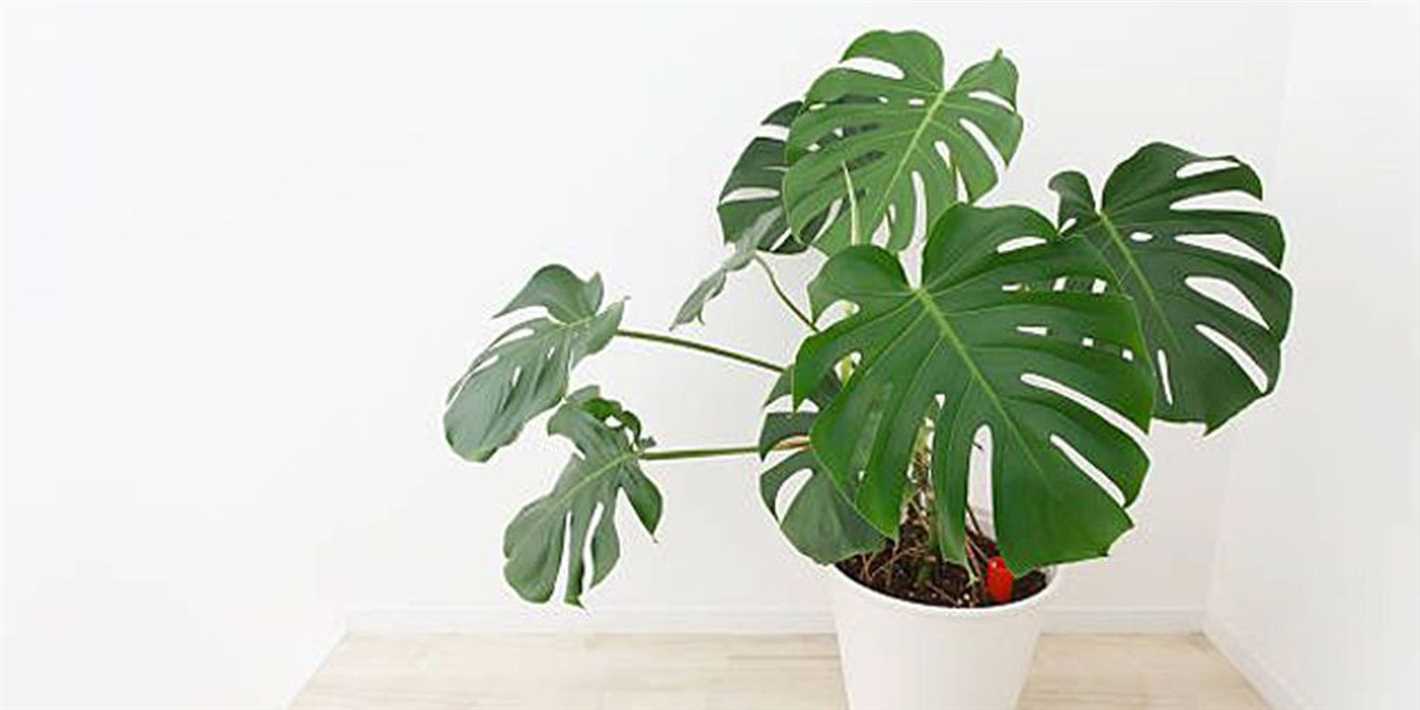
If you decide to propagate Monstera using stem cuttings, look for a healthy mature plant with strong and active growth. Select a section of the stem that has one or two nodes (the brown knobby parts where the leaves emerge), and use clean pruning shears to make a clean cut just below a node.
4. Rooting Hormone (Optional)
Applying rooting hormone to the cut end of the stem can help promote faster and more successful root development. However, it is optional and not necessary for all plants. If you choose to use rooting hormone, follow the instructions on the package and apply it to the cut end of the stem before planting it.
5. Plant the Cuttings
If you are propagating Monstera with stem cuttings, you can either place the cuttings directly in water or plant them in soil. For water propagation, fill a container with clean water and place the cuttings in the water so that the nodes are submerged. For soil propagation, make a hole in the soil with your finger or a stick and insert the cutting, ensuring the node is buried in the soil.
6. Provide Proper Care
Regardless of the method you choose, it is important to provide proper care for the propagated Monstera to increase the chances of successful growth. Keep the plant in a warm and humid environment with indirect sunlight. Water the plant regularly, ensuring the soil or water stays moist but not waterlogged.
7. Wait and Monitor
Be patient and wait for the new roots to develop. This can take anywhere from a few weeks to a few months, depending on the method and environmental conditions. It is essential to monitor the plant regularly for any signs of pests, diseases, or root rot.
8. Transplant or Share
Once the propagated Monstera has developed a healthy root system and established itself, it is ready to be transplanted into a larger pot or shared with others. Make sure to choose a pot or container with well-draining soil and provide proper care to ensure the continued growth and vitality of the plant.
Propagating Monstera can be a fun and rewarding experience. By following these step-by-step guidelines, you can successfully propagate your Monstera and enjoy expanding your collection or sharing the beauty of this popular indoor plant with others.
Monstera Problems: Common Issues and Troubleshooting
1. Yellowing Leaves
Yellowing leaves can indicate various issues with your Monstera plant. Here are the common causes and troubleshooting steps:
Overwatering: If the soil is constantly wet, it can lead to root rot and yellowing leaves. Make sure to allow the soil to dry out between waterings and adjust your watering frequency accordingly.
Underwatering: On the other hand, if your Monstera is not getting enough water, the leaves can also turn yellow. Check the soil moisture regularly and increase your watering if needed.
Lack of nutrients: Yellowing leaves may be a sign of nutrient deficiency. Consider using a balanced fertilizer and follow the recommended feeding schedule for your Monstera.
Exposure to direct sunlight: If your Monstera is exposed to too much direct sunlight, the leaves can become yellow and scorched. Move it to a location with indirect or filtered light.
2. Brown Spots on Leaves
Brown spots on the leaves of your Monstera can be caused by various factors. Here are some common issues and troubleshooting tips:
Overwatering: Excessive moisture can lead to fungal or bacterial diseases, resulting in brown spots on the leaves. Ensure proper drainage and allow the soil to dry out between waterings.
Pests: Some pests, such as spider mites or thrips, can cause brown spots on the leaves. Inspect your plant regularly and treat any infestations accordingly.
Nutrient deficiencies: Lack of essential nutrients, such as magnesium or calcium, can result in brown spots on the leaves. Consider using a balanced fertilizer to address nutrient deficiencies.
Leaf injury: Physical damage or bruising can also cause brown spots on the leaves. Handle your Monstera with care, avoiding any unnecessary damage.
3. Leaf Curling
If your Monstera leaves are curling, it may be an indication of the following issues:
Low humidity: Monstera plants thrive in high humidity environments. Increase humidity levels by misting the leaves or using a humidifier.
Underwatering: Lack of water can cause the leaves to curl. Ensure your Monstera is receiving adequate moisture, and adjust your watering schedule accordingly.
Drafts or temperature extremes: Exposure to cold drafts or extreme temperatures can cause leaf curling. Place your Monstera in a location with stable and moderate temperatures.
4. Yellowing or Browning Leaf Tips
Yellowing or browning leaf tips can be caused by the following factors:
Dry air: Monstera plants prefer high humidity, and dry air can lead to tip burn. Increase humidity levels by misting the leaves or using a humidifier.
Over-fertilization: Excessive fertilizer can cause the leaf tips to burn. Follow the recommended feeding guidelines for your Monstera and avoid over-fertilizing.
Salt buildup in soil: Accumulation of salts in the soil can cause leaf tip burn. Leach the soil regularly by flushing it with water to prevent salt buildup.
5. Lack of Growth
If your Monstera is not growing as expected, here are some factors to consider:
Insufficient light: Monstera plants require bright, indirect light to grow properly. If your plant is not receiving enough light, move it to a brighter location.
Nutrient deficiencies: Lack of essential nutrients can stunt growth. Ensure your Monstera is receiving proper fertilization to support healthy growth.
Rootbound: If your Monstera is rootbound, it may struggle to grow. Repot in a larger container to provide room for the roots to expand.
Environmental factors: Factors such as temperature extremes or drafts can hinder growth. Keep your Monstera in a stable environment with moderate temperatures.
By identifying and addressing these common issues, you can ensure the health and vitality of your Monstera plant.
Monstera vs. Philodendron: How to Tell the Difference
Monstera and Philodendron are two popular plants that belong to the same family, Araceae. While they may have similar characteristics, there are some key differences that can help you tell them apart. Here are some ways to distinguish Monstera from Philodendron:
Leaf Shape and Size
- Monstera leaves are typically larger and more dissected or perforated than Philodendron leaves.
- Monstera leaves can develop fenestrations, which are the iconic splits or holes in the leaves.
- Philodendron leaves are usually smaller and have a smoother margin without much perforation.
Growth Habit
- Monstera plants are climbers and have aerial roots that allow them to attach to trees or other surfaces.
- Philodendron plants can also climb, but they usually have a more upright or trailing growth habit.
Fruit Production
One unique characteristic of Monstera plants is their ability to produce fruit. The fruit is a large, green, and edible cone-like structure that is often referred to as a Monstera deliciosa or Swiss cheese fruit. Philodendron plants, on the other hand, do not typically produce fruit.
Genus and Species
Monstera belongs to the genus Monstera, with the most common species being Monstera deliciosa. Philodendron belongs to the genus Philodendron, and there are numerous species within this genus, including Philodendron xanadu, Philodendron cordatum, and Philodendron selloum, among others.
Care Requirements
Despite their differences, both Monstera and Philodendron are relatively easy to care for. They prefer bright, indirect light and well-draining soil. Both plants should be watered when the top inch of soil feels dry, and humidity is beneficial for their growth.
In conclusion, Monstera and Philodendron may share some similarities, but their distinct characteristics are what make them unique. By observing their leaf shape and size, growth habit, fruit production, and knowing their genus and species, you can easily tell the difference between these two popular plants.
Monstera in Interior Design: Styling Ideas and Inspiration
The Monstera plant, with its striking and vibrant leaves, has become a popular choice for interior design. Its unique beauty and ability to thrive in various conditions make it a versatile addition to any space. Whether you have a modern, minimalist apartment or a cozy, bohemian home, the Monstera plant can enhance the overall aesthetic and bring life to your interior design.
1. Statement Plant
One way to incorporate the Monstera plant in your interior design is by using it as a statement plant. Place a large Monstera plant in a vibrant pot and position it in a prominent spot in your living room or hallway. This will create a focal point and instantly draw attention to the plant’s lush green leaves. Pair it with neutral-colored furniture and minimal decor for a modern and sleek look.
2. Hanging Plant
If you have limited floor space, consider incorporating the Monstera plant as a hanging plant. Install macramé hangers from the ceiling or use wall hooks to hang the plant at different levels. This creates an interesting visual display and adds depth to your interior design. Opt for smaller Monstera plants in hanging baskets to create a cascading effect.
3. Plant Shelf
Another way to incorporate the Monstera plant in your interior design is by creating a dedicated plant shelf. Install floating shelves on an empty wall and arrange a collection of Monstera plants at different heights. This not only adds greenery to your space but also creates a visually pleasing display. Mix and match different sizes and types of Monstera plants for a diverse and dynamic look.
4. Monochrome Color Scheme
For a more cohesive and stylish look, consider incorporating the Monstera plant in a monochrome color scheme. Choose pots and accessories in shades of green, white, and black to complement the plant’s color palette. This creates a harmonious and balanced aesthetic, especially when paired with furniture and decor in similar tones.
5. Natural Contrast
If you have a minimalist or Scandinavian-inspired interior design, the Monstera plant can create a beautiful contrast against the clean lines and neutral colors. Place a large Monstera plant near a white or light-colored wall to make it the focal point of the room. The vibrant green leaves will bring life and vibrancy to the space, while the simplicity of the surroundings will enhance its beauty.
6. Indoor Jungle
If you love the idea of an indoor jungle, the Monstera plant is a must-have in your interior design. Combine it with other tropical plants, such as ferns, palms, and snake plants, to create a lush and vibrant jungle-like atmosphere. Arrange the plants in corners, on shelves, or even create a hanging plant wall to maximize the greenery.
Overall, the Monstera plant offers endless possibilities for styling and inspiration in interior design. Whether you prefer a minimalistic, modern look or a bohemian, eclectic vibe, this versatile plant can enhance any space and add a touch of nature to your home.
Monstera FAQ: Answers to Your Frequently Asked Questions
1. How often should I water my Monstera?

Monstera plants prefer to be kept consistently moist, but not overly saturated. As a general rule, you should water your Monstera approximately once a week during the growing season. However, it’s important to adjust the watering frequency based on the specific needs of your plant and the environment it is in.
2. How much light does a Monstera need?
Monstera plants thrive in bright, indirect light. They can tolerate some direct sunlight, but too much can cause their leaves to burn. Place your Monstera near a window with filtered or indirect sunlight for optimal growth. If you notice the leaves becoming pale or yellow, it may be a sign that your plant is not receiving enough light.
3. How often should I fertilize my Monstera?

During the growing season, it’s recommended to fertilize your Monstera once a month. Use a balanced, water-soluble fertilizer and follow the instructions on the packaging for proper dosage. Avoid over-fertilizing, as this can lead to nutrient burn and other potential issues.
4. Should I prune my Monstera?
Pruning can help maintain the shape and size of your Monstera plant, as well as promote new growth. You can prune your Monstera by cutting back any overgrown or yellowing leaves, as well as trimming back excessively long stems. It’s best to use clean, sharp shears or scissors to prevent any damage to the plant.
5. How do I propagate a Monstera?
Monstera plants can be propagated through stem cuttings. Choose a healthy stem with at least one leaf node, and make a clean cut just below the node. Place the cutting in water or a well-draining soil mix, and keep it in a warm and humid environment. After a few weeks, roots should begin to develop, and you can transfer the cutting to a pot with soil.
6. Are Monstera plants toxic to pets?
Yes, Monstera plants are considered toxic to both cats and dogs. They contain calcium oxalate crystals, which can cause irritation and discomfort if ingested. It’s important to keep your Monstera out of reach of your pets and to seek veterinary attention if you suspect they have ingested any part of the plant.
7. Why are the leaves of my Monstera turning brown?
Brown leaves on a Monstera can be a sign of various issues, including underwatering, overwatering, low humidity, direct sunlight, or nutrient deficiencies. Assess the care routine of your plant and make adjustments as needed. Trimming off any brown or dying leaves can also help promote new growth.
8. Can I place my Monstera outdoors?
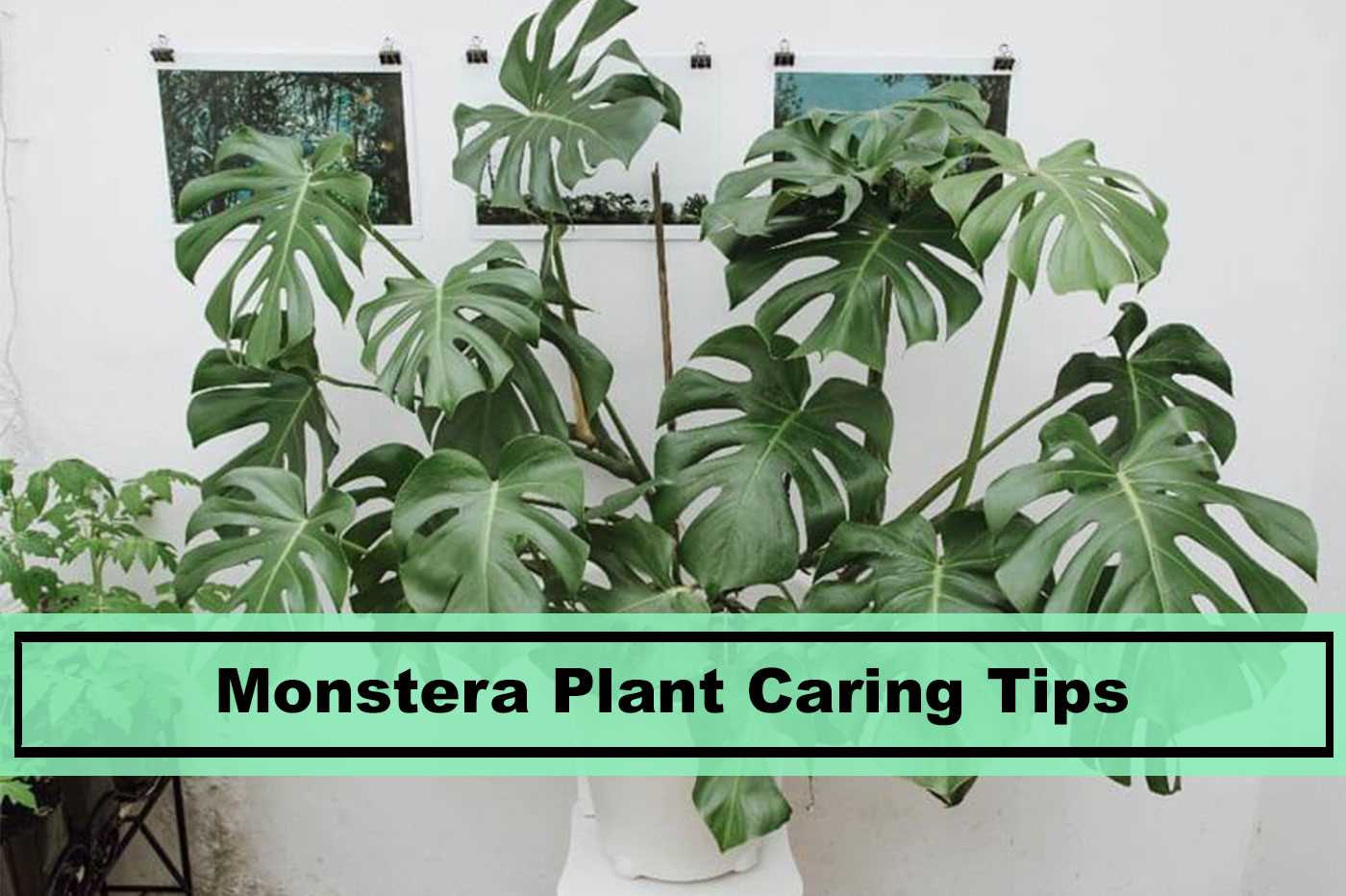
Monstera plants can be placed outdoors in areas with a similar climate to their natural tropical habitat, such as warm and humid regions. However, it’s important to protect them from direct sunlight and strong winds, as well as to bring them indoors during colder months or extreme weather conditions.
9. How fast does a Monstera grow?
The growth rate of a Monstera plant can vary depending on factors such as light, temperature, humidity, and overall care. In optimum conditions, a Monstera can grow several feet per year, producing larger leaves and trailing vines. Regularly feeding and providing proper care will help encourage faster growth.
10. Can I propagate Monstera from a leaf cutting?
No, Monstera plants cannot be propagated from a leaf cutting alone. Unlike some other plants, a Monstera cutting needs a portion of the stem with a leaf node to develop roots and grow into a new plant. Simply placing a leaf in water or soil will not result in propagation.
11. How do I clean the leaves of my Monstera?
You can clean the leaves of your Monstera plant by gently wiping them with a damp cloth or sponge. Avoid using any cleaning products or oils, as they can clog the pores of the leaves. Keeping the leaves clean helps the plant in photosynthesis and prevents dust buildup.
12. Why are there no holes in my Monstera leaves?
Monstera plants develop their characteristic holes, called fenestrations, as they mature. Younger Monstera plants typically have solid leaves without holes, while older plants exhibit more fenestrations. Factors such as light and humidity can also influence the development of fenestrations.
13. Can I grow Monstera in water instead of soil?
Monstera plants can temporarily be grown in water as a way to propagate cuttings. However, growing them solely in water for an extended period is not ideal, as they require nutrients from soil to thrive. If you choose to grow your Monstera in water, it’s important to eventually transfer it to a well-draining soil mix.
14. What are some common pests that can affect Monstera?

Common pests that can affect Monstera plants include spider mites, mealybugs, scale insects, and aphids. Regularly inspect your plant for signs of pests, such as webs, sticky residue, or small crawling insects. Treatment options include using insecticidal soap, neem oil, or manually removing the pests with a cotton swab dipped in rubbing alcohol.
Q&A:
How do I take care of a Monstera plant?
To take care of a Monstera plant, you should place it in a well-lit area, but away from direct sunlight. It prefers a temperature range of 65-85°F (18-29°C) and high humidity. Water the plant thoroughly when the top inch of soil feels dry and make sure to drain any excess water. Monstera plants also benefit from regular fertilization during the growing season and occasional pruning to control their size.
What are some common types of Monstera plants?
Some common types of Monstera plants include Monstera deliciosa, Monstera adansonii, Monstera obliqua, and Monstera dubia. Monstera deliciosa is the most popular and well-known variety, with large, split leaves. Monstera adansonii, also known as the Swiss cheese plant, has smaller, fenestrated leaves. Monstera obliqua is a rare and highly sought-after variety with incredibly fenestrated leaves, while Monstera dubia has unique, circular leaves with small holes.
Can I propagate a Monstera plant?
Yes, you can propagate a Monstera plant. One common method is to take stem cuttings with at least one node and place them in water or moist soil until roots develop. Another method is air layering, where you make a small cut in a stem, apply rooting hormone, and wrap it in a moist sphagnum moss. Once roots develop, you can cut the stem below the rooted portion and plant it in a pot. Propagating a Monstera plant is a great way to expand your plant collection or share it with friends.
Why are the leaves of my Monstera plant turning yellow?
There are several possible reasons why the leaves of your Monstera plant may be turning yellow. It could be a sign of overwatering, as excessive moisture can cause root rot and lead to yellowing leaves. On the other hand, underwatering can also cause leaf yellowing and wilting. Another possibility is nutrient deficiency, particularly a lack of nitrogen. Pests, such as spider mites or aphids, can also cause leaf discoloration. Assess the watering, fertilizing, and pest situation of your Monstera plant to determine the cause of the yellowing leaves.
How do I clean the leaves of my Monstera plant?
To clean the leaves of your Monstera plant, you can use a damp cloth or sponge to gently wipe away any dust or dirt. Alternatively, you can also use a mixture of water and mild soap to wipe down the leaves. Make sure to rinse off the soap residue to prevent it from clogging the plant’s pores. Regularly cleaning the leaves of your Monstera plant helps to keep them free from debris and maintain their ability to photosynthesize effectively.
Video:
Tips + Tricks For Monstera Deliciosa | ALL YOU NEED TO KNOW Indoor Plant Tips For Beginners
